Leiser Abramowitz was my Grandmother Gussie’s brother. He was born on September 18, 1883, in Salaspils, Latvia. We know the family also lived in Mitau (Jelgava) and he is listed as being from Jelgava on his marriage record.
According to his travel passport issued in Jelgava in 1920, Leiser was exempt from military service for health reasons. (1)
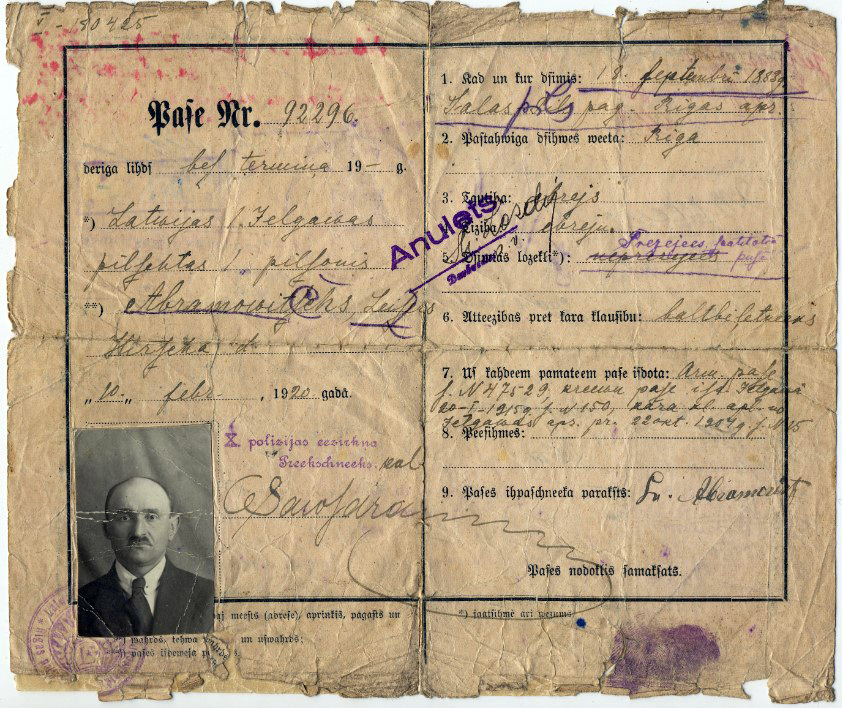
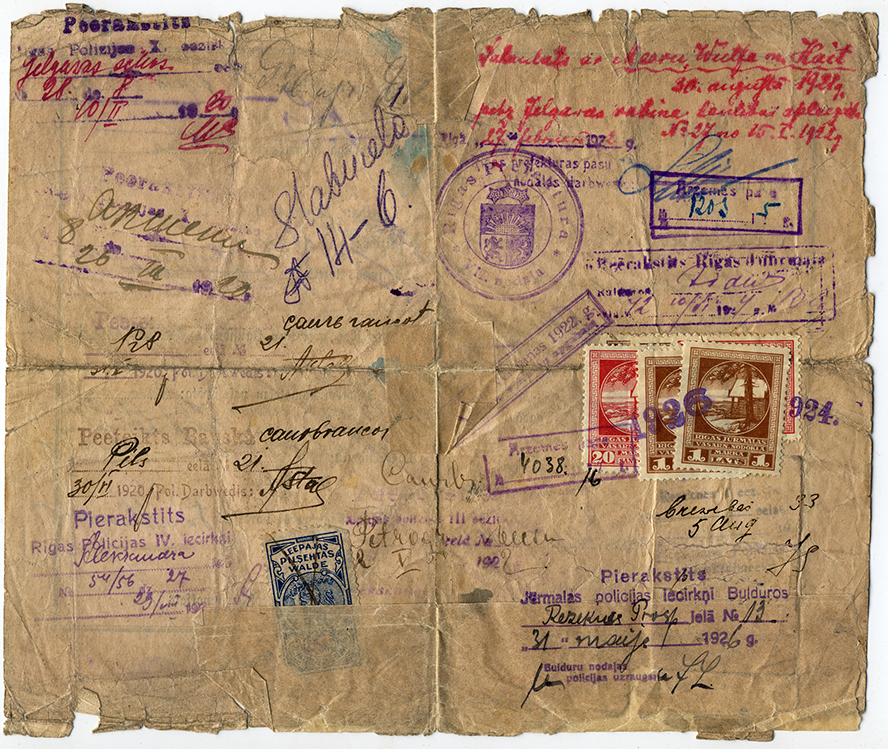
In 1921, when he was 38 years old, he married Mera Khait, age 22. She had a dowry of 75 rubles. (2)

They lived in Riga where they had four known children:
- Isak born in 1922
- Pesach born in 1927
- Eta born in 1929
- Abram, birth date unknown
Below are two places that he lived based on addresses I found:
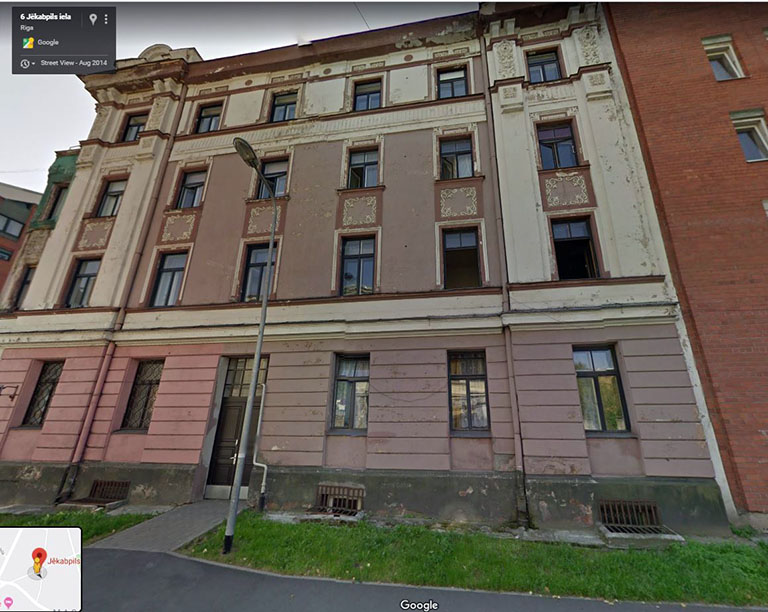
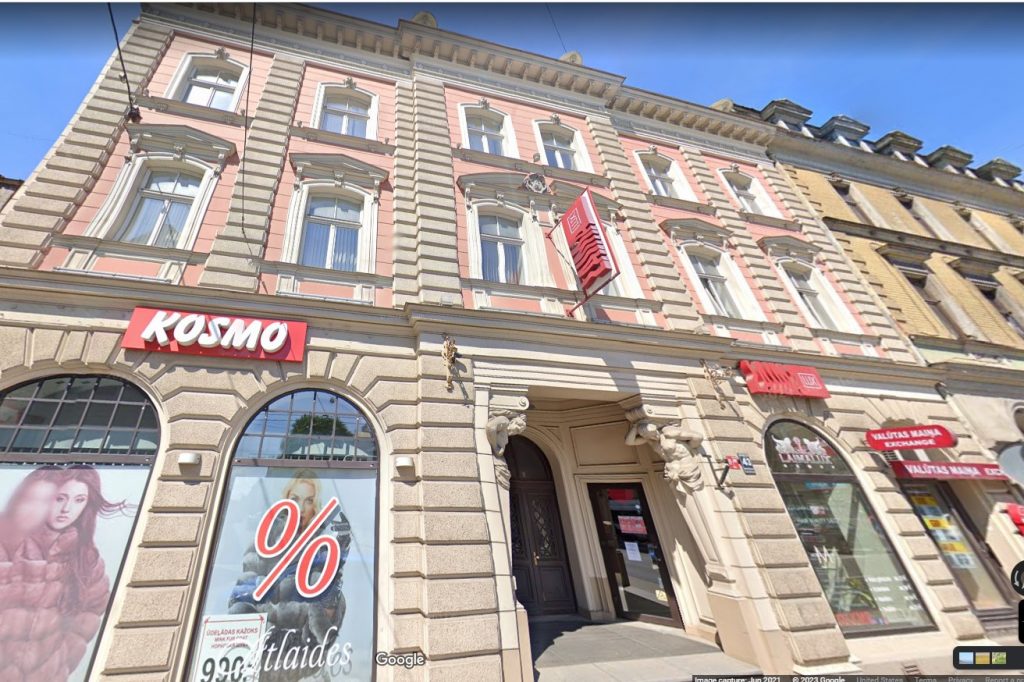
The building on the left is located at 6 Jekabpils, Riga (3). The building on the right is located at 42 Brivbas Iela in the Central District of Riga. Leiser and his family lived there from 1923 – 1931 (4). If this photo is accurate, there was a pub to the left of this building. According to Google Maps, this building is 43 Brivbas. However, the pub was 41, so I assume, there were mulitple apartments in this building.
In 1935, his sister and brother-in-law, Sarah and Charles Freedman, visited Riga from the United States, and always talked about how well-off her brother was. She liked to say that one brother had five children. The other brother ran a grocery store and one was very wealthy and had an apartment house with 4 elevators. He even sent Sarah’s daughter, Dorothy Sekeley, a wedding gift of six very heavy sterling serving spoons.
Which brother was Leiser? I assume the one with the bulding with the elevators, since he was listed as a merchant in his YadVaShem page of Testimony and we know he had at least 4 children. Also, his name was remembered by the family.
However, being successful and settled into life in Riga probably prevented him and his brother from taking their families and leaving when they still could.
The start of World War II turned their lives upside down and they were forced to move into the Riga Ghetto at 14 Stabu Street living in a building with many other families often in one room. They were all given food ration cards.
Imprisioned with the rest of his family was their son, Isak, who prior to the war, sent his picture to one of his cousins in the United States. (6)
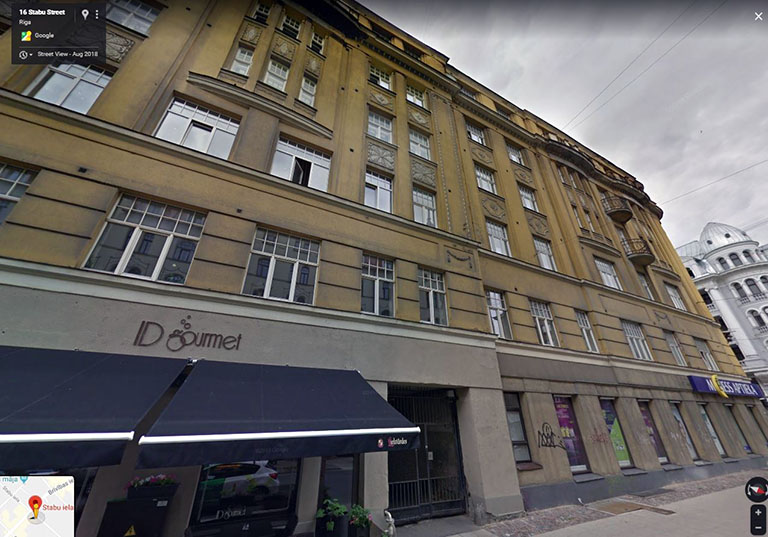
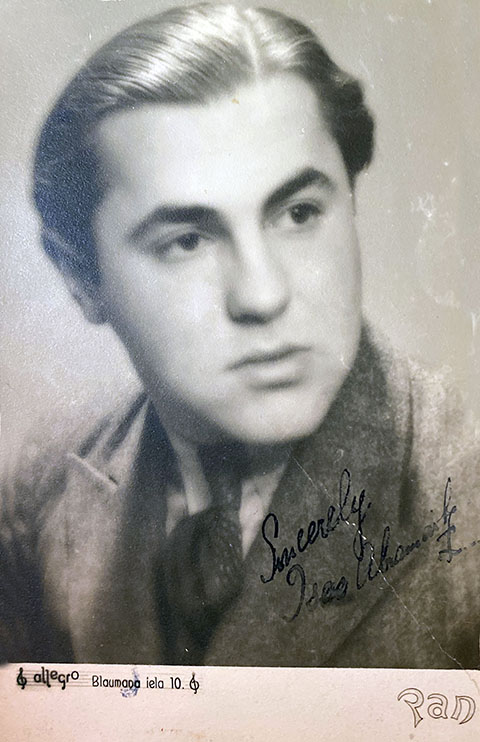
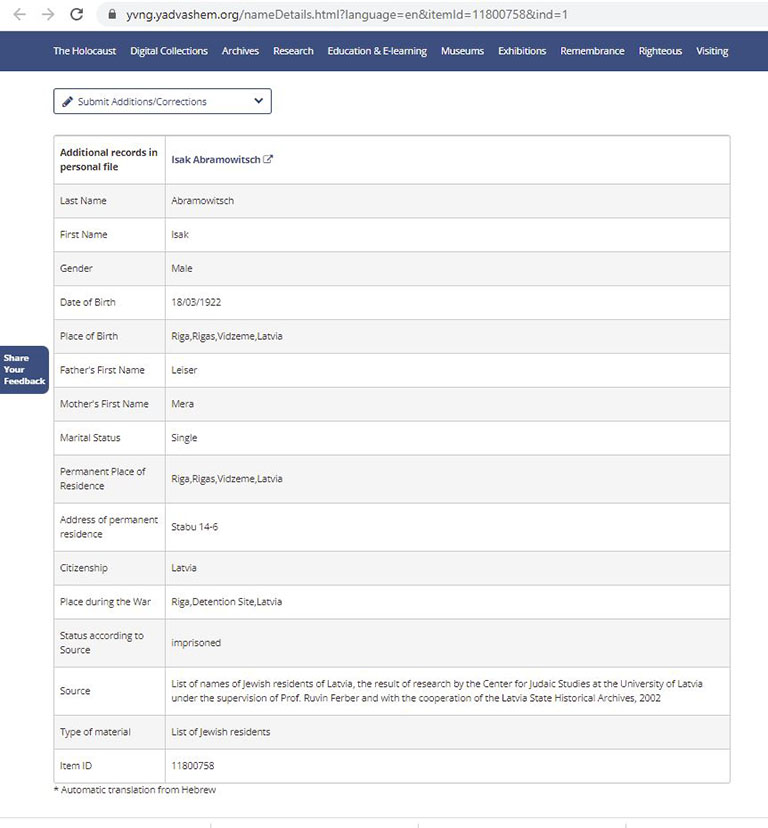
There has been much written about the ghetto on Stabu Street. On July 4, 1941, the men living on Stabu Street were rounded up and marched to the Synagogue (see photo on right). The Synagogue was then set on fire and the men inside all burned to death.
We don’t know for sure that Leiser and his sons were included but eventually Leiser and his family all tragically perished in the Holocaust.
For a horrific description of what went on in the Riga Ghetto, read Sherry Sanders book, “Daughters of the Occupation“.
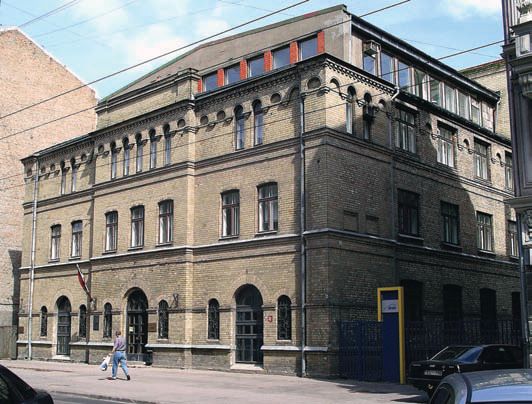
One of my earliest memories, is hearing screaming and crying in our Brooklyn apartment. When I asked what was wrong, my mother said that Uncle Max just found out two of his brothers and their families had been murdered duing the Holocaust. He had tried hard to get them documents and money to be able to leave, but to no avail.
Sources
- 1 – Passport from YadVaShem Central Database of Holocaust Victims, translations of passport from various people on the Facebook group, Tracing The Tribe
- 2 – The JewishGen.org Marriage Record of Leiser and Mera
- 3 – Google Maps Image of 6 Jekabphils, RIga
- 4 – Google Maps Image of 43 Brivbas Iela
- 5 – Google Maps of 14 Stabu Street.
- 6 – Isak Abramowitz, Yad VaShem, Central Database of Holocaust Victims
- 7 – Stabu Street Synagogue, Riga
